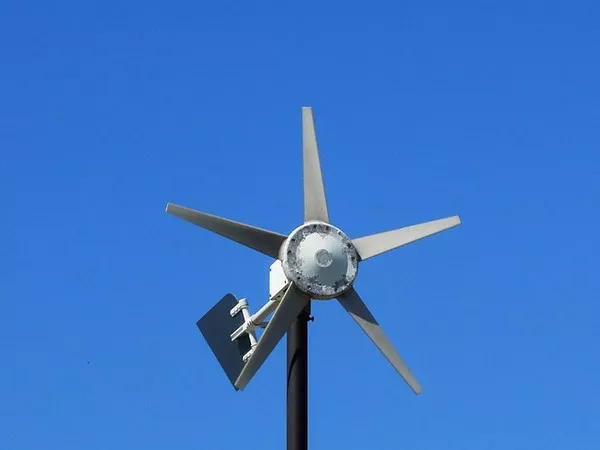In today’s fast-paced world, accurate measurement of environmental parameters is crucial for various applications, from weather forecasting and aviation to industrial processes and renewable energy production. Among these parameters, wind speed holds a prominent position due to its significant impact on diverse fields. Digital anemometers have emerged as indispensable tools for measuring wind speed with high precision and reliability. In this article, we delve into the mechanics of a digital anemometer, exploring how it operates and its various applications.
Introduction to Digital Anemometers
A digital anemometer is a sophisticated instrument designed to measure the velocity of the wind. Unlike traditional analog anemometers, which rely on mechanical principles to gauge wind speed, digital anemometers employ modern electronics and sensor technologies to provide accurate and instantaneous readings. This transition from mechanical to digital technology has led to enhanced precision, versatility, and ease of use in wind speed measurement.
Components of a Digital Anemometer
A typical digital anemometer consists of several key components that work in synergy to accurately measure wind speed:
Sensor Unit:
At the heart of a digital anemometer is its sensor unit. Most digital anemometers employ a hot-wire sensor or a cup and vane sensor. The hot-wire sensor consists of a fine wire that is heated to a constant temperature. As the wind flows over the wire, its cooling effect causes a change in resistance, which is measured and converted into wind speed. The cup and vane sensor features rotating cups or blades that turn with the wind’s force. The rotation rate is proportional to the wind speed and is measured to determine the velocity.
Data Processing Unit:
The data processing unit is responsible for receiving, processing, and interpreting the signals from the sensor unit. It converts the electrical signals generated by the sensor into digital readings that can be easily displayed and understood. This unit also often includes calibration functions to ensure accuracy and compensate for any potential errors.
Display and Interface:
Modern digital anemometers are equipped with user-friendly displays that provide real-time wind speed readings. These displays may include numerical values, graphical representations, and additional information such as maximum and average wind speeds. Many anemometers also feature interfaces for data logging, connectivity with other devices, and remote monitoring.
Power Source:
Digital anemometers are powered by batteries or external power sources. Battery-powered models offer portability and are ideal for fieldwork, while those with external power sources are suitable for continuous monitoring applications.
How a Digital Anemometer Works
Understanding the inner workings of a digital anemometer involves tracing the flow of events from the moment the wind hits the sensor to the point where the user receives a wind speed reading:
Wind Interaction with Sensor: When the wind strikes the sensor unit, the hot-wire sensor experiences a change in resistance due to the cooling effect of the moving air. Alternatively, in a cup and vane sensor, the cups or blades begin to rotate with the force of the wind.
Signal Generation: The change in resistance or the rotation rate of the sensor generates electrical signals. These signals are proportional to the wind speed and are transmitted to the data processing unit.
Signal Conversion: The data processing unit receives the electrical signals and converts them into digital values. This conversion involves amplification, filtering, and analog-to-digital conversion processes.
Data Interpretation: Once the digital values are obtained, the data processing unit interprets them and calculates the corresponding wind speed. This calculation may involve applying calibration factors to account for sensor characteristics and environmental conditions.
Display and Output: The calculated wind speed is then displayed on the instrument’s user interface. This can include numerical readings, graphical representations, and additional information such as gust speed and wind direction.
Applications of Digital Anemometers
The versatility and accuracy of digital anemometers make them indispensable tools in various fields:
Weather Forecasting: Meteorologists rely on digital anemometers to gather real-time wind speed data, contributing to accurate weather forecasts and climate studies.
Aviation: Airports and flight control centers use anemometers to assess wind conditions for safe takeoffs and landings.
Marine Navigation: Ships and offshore platforms require precise wind speed information to ensure safe navigation and operations.
Renewable Energy: Wind farms use digital anemometers to optimize turbine performance by monitoring wind speeds and adjusting turbine settings accordingly.
Environmental Monitoring: Digital anemometers play a crucial role in studying air pollution dispersion and understanding local airflow patterns.
Industrial Processes: Various industrial applications, such as HVAC system design and pollutant dispersion studies, rely on accurate wind speed measurements.
Conclusion
Digital anemometers have revolutionized the way we measure wind speed, replacing traditional mechanical systems with advanced sensor technologies and data processing units. The synergy of these components enables accurate, instantaneous, and versatile wind speed measurements across a spectrum of applications. As technology continues to advance, digital anemometers are expected to evolve further, offering even higher levels of precision, connectivity, and integration with other measurement systems. Whether in meteorology, aviation, renewable energy, or industrial processes, digital anemometers stand as indispensable tools for gaining insights into the complex dynamics of wind.

